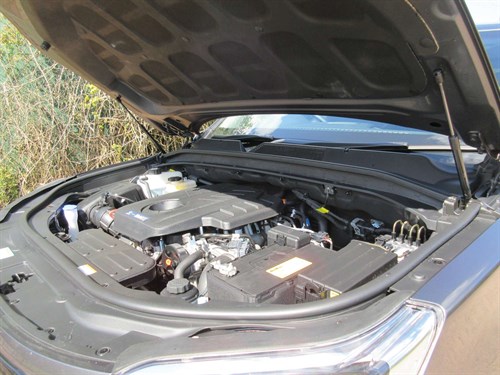- New Maxus EVs include eDeliver 5 van
- Used LCV values reach six-month high
- ADVERTISEMENT FEATURE: IVECO Daily Mission Awards 2024 Q2 Round-up: Grounds Maintenance & Forestry
- Stellantis Pro One electric vans review
- Mitie adds 5,000th EV to fleet
- Record number of CVs now on UK roads, SMMT reports
- Tyres: The path of least resistance
- ETRUX receives Ford Pro Convertor status
- The Logistics Organisation adds to van fleet with Vanaways
- Northgate launches micromobility service
The What Van? Road Test: VW Caddy (2018)
Date: Friday, September 20, 2019 | Author: Steve Banner

Engine and gearbox
The Caddy’s transverse-mounted four-cylinder in-line common-rail direct-injection diesel is equipped with a variable-geometry turbocharger and an intercooler. Max power makes its presence felt across a 2,900-4,000rpm plateau while top torque of 250Nm impacts across a 1,300-2,800rpm plateau.
Selective Catalytic Reduction technology is used to achieve Euro6, which means the diesel Caddy has to be dosed with AdBlue held in a nine-litre onboard tank. A particulate filter is a standard feature.
Our demonstrator came with the manual gearbox.
Driving
The Caddy handles remarkably well. Push it hard through bends and it clings doggedly to the tarmac, and should only come unstuck if you do something silly.
The ride is firm, but not unpleasantly so, and a slick, quick gear change helps you make rapid progress.
With plenty of mid-range get-up-and-go, the engine offers ample horses for a van of this size. Furthermore, it is frugal, despite the fact that in our case it was married to a five- rather than a six-speed transmission. Stop/start, which can be switched off, clearly helps to reduce fuel consumption, and is combined with regenerative braking, which recoups energy that would otherwise be lost.
We averaged around 55mpg – below the official figure, but not by a huge amount – lightly laden over a mixture of motorway, A- and B-roads and urban routes.
Our Caddy was a tad on the noisy side, with lots of wind noise and road roar from the rear accompanied by the sound of diesel sloshing around in the fuel tank. Having a bulkhead topped off by a mesh grille rather than one that was completely solid to its full height probably made noise levels slightly worse than they would otherwise be.
View The WhatVan Digital Edition


